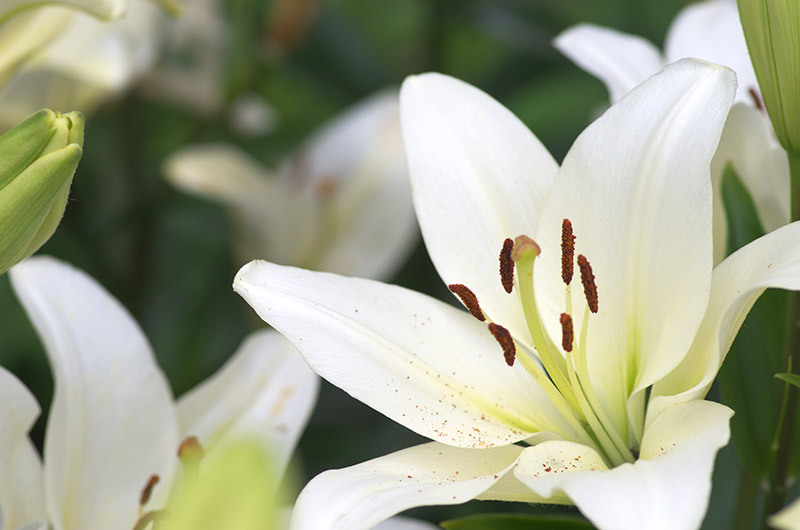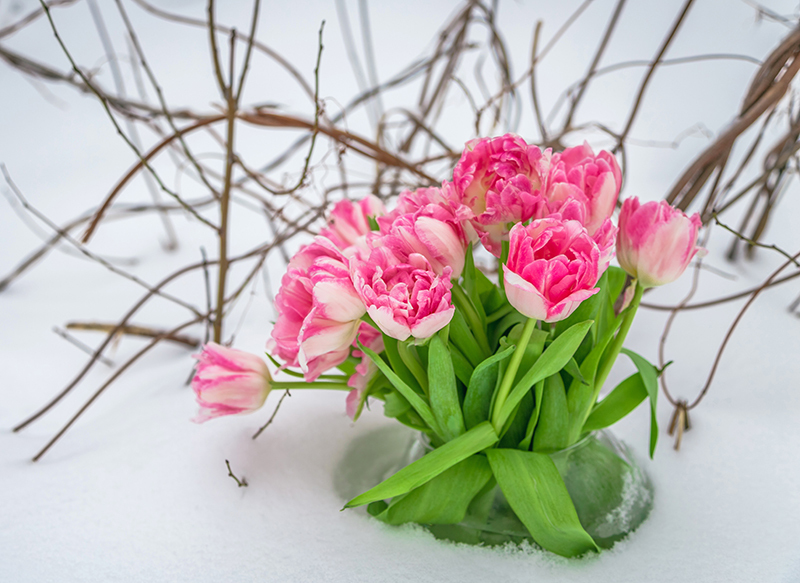Transform Your Poinsettias into Lasting Joy
Posted on 18/08/2025
Transform Your Poinsettias into Lasting Joy: Comprehensive Guide for Vibrant Longevity
Poinsettias have long been synonymous with holiday cheer, their vivid bracts gracing homes around the world. Traditionally seen as temporary decor, many people simply discard them once the festivities fade. But what if you could transform your poinsettias into lasting joy--turning these stunning plants from fleeting ornaments into flourishing, year-round companions?
In this detailed guide, discover powerful strategies to care for your poinsettias, learn expert techniques for reblooming, and unearth creative display ideas. With the right know-how, your festive favorite can thrive long after the lights come down!
Understanding Poinsettias: Beyond Holiday Decorations
Originating from Mexico, Euphorbia pulcherrima, commonly known as the poinsettia, dazzles with its eye-catching red, pink, or white bracts (often mistaken for flowers). Contrary to popular belief, poinsettias are not toxic to humans or pets, making them an excellent choice for most households.
Why Should You Keep Your Poinsettias?
- Sustainable Choice: Extend the life of your plant, reducing waste and saving money.
- Year-Round Beauty: With proper care, poinsettias can be lush green houseplants for months, even years.
- Rewarding Challenge: Encouraging rebloom is exciting and immensely satisfying for plant lovers.
- Creative Potential: Poinsettias can be integrated into garden designs, floral arrangements, or potted plant collections.

Essential Poinsettia Care: Keeping Your Plant Vibrant
To ensure your poinsettia's lasting joy, it's vital to address their unique care needs. Below, we cover everything from post-holiday TLC to ongoing maintenance.
1. Immediate Post-Holiday Care
- Remove Wrappings: Take off decorative foils that may prevent proper drainage.
- Check for Water: The soil should be moist (not soggy). Water only when the top inch feels dry to the touch.
- Trim Damaged Foliage: Snip off any wilted, yellow, or dead leaves to encourage healthy growth.
2. Choosing the Perfect Spot
- Bright, Indirect Light: Poinsettias love well-lit spots but avoid harsh direct sunlight.
- Temperature Control: Ideal range is between 60-70?F (15-21?C). Avoid cold drafts and sudden temperature changes.
- Humidity: Maintain moderate humidity levels to prevent leaf drop.
3. Watering Wisdom
- Consistent Moisture: Keep soil evenly moist, not waterlogged. Overwatering is a leading cause of root rot.
- Proper Drainage: Ensure pots have drainage holes, and never leave the plant standing in water.
- Tip: Water less frequently in winter when the plant is not actively growing.
4. Fertilizing for Future Growth
- Start in Spring: Fertilize monthly with a balanced, water-soluble fertilizer starting in March or April.
- Avoid Over-Fertilizing: Excess fertilizer can harm delicate roots--always follow package instructions.
The Annual Poinsettia Cycle: Step-by-Step Transformation
Transforming poinsettias into long-lasting joy requires guiding them through their annual cycle. Each phase demands specific attention for optimal results.
Late Winter/Early Spring (January - March): Transitioning to Green
- Gradual Light Reduction: As colored bracts fade, reduce watering and allow the plant to rest.
- Pruning Time: Cut stems back to about 6 inches from the soil to promote bushier growth.
- Continue Basic Care: Keep soil barely moist and provide bright, indirect light.
Spring/Summer (April - September): Encouraging New Growth
- Increase Watering: As new growth appears, water the plant more frequently--but always check soil moisture first.
- Fertilize Monthly: Use a balanced fertilizer to support healthy foliage development.
- Prune Again: Pinch back tips in early July to encourage branching (and thus more blooms later).
- Outdoor Option: Once nights are above 55?F (13?C), move your poinsettia outdoors to a shaded, sheltered spot if desired.
Fall (October): The Key to Reblooming
- Short-day Treatment: Poinsettias require 12-14 hours of TOTAL darkness each night, beginning in late September or early October, to initiate blooming.
- How-To: Place the plant in a closet or cover with a box from 5 pm to 7 am. Expose to bright light from 7 am to 5 pm each day.
- Consistency is Crucial: Continue this cycle for 8-10 weeks. Even a brief exposure to artificial light at night can disrupt the process!
Winter (November/December): Enjoying the Blooms
- Return to Normal Care: When bracts begin to color (often around Thanksgiving), move the plant to a prominent spot and resume regular care.
- Display and Delight: Showcase your rebloomed poinsettias in festive arrangements or as a standalone pride and joy.
Creative Display Ideas: Showcasing Your Lasting Poinsettia Joy
After investing in year-round care, you'll want to present your transformed poinsettias in creative ways. Here are some display inspirations:
Container Combinations
- Mix and Match: Pair variegated or green-leafed poinsettias with ferns, ivies, and other houseplants for dynamic displays.
- Statement Planters: Choose pots in metallic, ceramic, or woven materials to complement your decor.
- Trailing Accents: Add trailing plants like pothos for a lush, layered effect.
Living Centerpieces
- Holiday Table: Cluster several small poinsettias with candles and ornaments for a dramatic centerpiece.
- Non-Seasonal Display: Offset pink or white poinsettias with greenery for spring and summer elegance.
Outdoor Displays
- Porch Planters: In mild climates, poinsettias add vivid color to entryways or patio arrangements.
- Garden Beds: Transplant into flowerbeds (only in frost-free zones) for lush, year-round landscaping.
Troubleshooting: Keeping Your Poinsettias Healthy All Year
Even the most attentive caretaker may encounter challenges. Here's how to protect your poinsettia's lasting joy and solve common issues:
Common Problems & Solutions
- Yellowing Leaves: Likely cause: Overwatering or root rot. Solution: Allow soil to dry between waterings; check for good drainage.
- Leaf Drop: Likely cause: Drafts, sudden temperature changes, or low humidity. Solution: Move plant away from vents and maintain steady environmental conditions.
- Wilting: Likely cause: Underwatering or poor root health. Solution: Water thoroughly, allowing excess to drain.
- No Rebloom: Likely cause: Inconsistent short-day treatment. Solution: Ensure total darkness every night for at least 8 weeks.
- Pest Infestation: Likely cause: Indoor pests like whiteflies or spider mites. Solution: Rinse leaves, use insecticidal soap, and isolate infected plants.
Frequently Asked Questions About Long-Lived Poinsettias
Q: Can I grow my poinsettia outdoors permanently?
A: Only in frost-free climates (USDA Zones 10-12). Elsewhere, keep it as a houseplant or bring it indoors before temperatures dip below 50?F (10?C).
Q: Why are my poinsettia's bracts not turning color again?
A: This usually means the plant didn't receive the critical period of complete darkness required to trigger blooming. Start the short-day treatment earlier next year!
Q: How long can a poinsettia live?
A: With good care, they can thrive for many years. Some enthusiasts report keeping the same plant vibrant for a decade or more!

Embracing the Joy: A New Perspective on Poinsettias
By extending your poinsettia's beauty beyond the holiday season, you're not only making a sustainable choice--you're cultivating a rewarding connection with a living symbol of joy. The journey from holiday elegance to year-round radiance is simpler than many imagine. Each stage is a fresh opportunity to nurture, challenge, and celebrate one of nature's most dazzling botanicals.
Transform your poinsettias into lasting joy by adopting these expert tips and creative inspirations. You'll enjoy vibrant leaves, colorful blooms, and a festive spirit--no matter the date on the calendar. Start today, and let your poinsettias reward you with a legacy of beauty and happiness all year long!
Conclusion: Your Guide to Perpetual Poinsettia Delight
- Caring: Meet your plant's basic needs for water, light, and temperature year-round.
- Reblooming: Provide strict short-day treatments each autumn for beautiful winter color.
- Displaying: Use creative arrangements to showcase your poinsettia's ongoing transformation.
- Stay attentive, experiment, and enjoy the process of growing--not just buying--your holiday poinsettia!
Let your poinsettias become a lasting source of joy and pride--not just for holidays, but for every season of life.
Latest Posts
What Flower Reflects Your True Identity?
Discover Flowers that Stand Strong: Top 12 Picks
Transform Your Poinsettias into Lasting Joy





